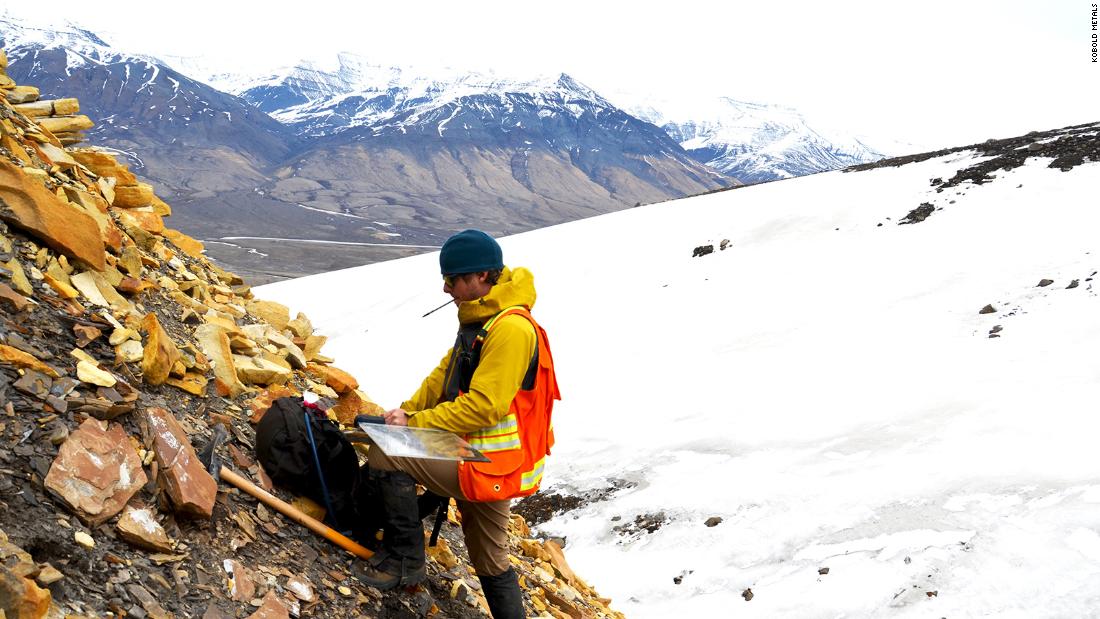
Thirty geologists, geophysicists, cooks, pilots and mechanics are camped at the site where Kobold and Blujay are searching for the buried treasure. CNN is the first media outlet with video of the activity happening there.
Crews are taking soil samples, flying drones and helicopters with transmitters to measure the electromagnetic field of the subsurface and map the layers of rock below. They’re using artificial intelligence to analyze the data to pinpoint exactly where to drill as early as next summer.
“It is a concern to witness the consequences and impacts from the climate changes in Greenland,” Bluejay Mining CEO Bo Møller Stensgaard told CNN. “But, generally speaking, climate changes overall have made exploration and mining in Greenland easier and more accessible.”
Stensgaard said that because climate change is making ice-free periods in the sea longer, teams are able to ship in heavy equipment and ship out metals out to the global market more easily.
Melting land ice is exposing land that has been buried under ice for centuries to millennia — but could now become a potential site for mineral exploration.
“As these trends continue well into the future, there is no question more land will become accessible and some of this land may carry the potential for mineral development,” Mike Sfraga, the chair of the United States Arctic Research Commission, told CNN.
Greenland could be a hot spot for coal, copper, gold, rare-earth elements and zinc, according to the Geological Survey of Denmark and Greenland. The government of Greenland, according to the agency, has done several “resource assessments throughout the ice-free land” and the government “recognizes the country’s potential to diversify the national economy through mineral extraction.”
Sfraga said that pro-mining stance is not without regard for the environment, which is central to Greenland’s culture and livelihood.
“The government of Greenland supports the responsible, sustainable, and economically viable development of their natural resources to include mining of a broad range of minerals,” Sfraga said.
Stensgaard noted that these critical minerals will “provide part of the solution to meet these challenges” that the climate crisis presents.
In the meantime, Greenland’s vanishing ice — which is pushing sea level higher — is a great concern for scientists who study the Arctic.
“The big concern for Arctic sea ice is that it’s been disappearing over the last several decades its predicted to potentially disappear in 20 to 30 years,” Nathan Kurtz, a NASA scientist who studies sea ice, told CNN. “In the fall, what used to be Artic ice cover year-round is now just going to be seasonal ice cover.”

